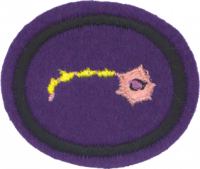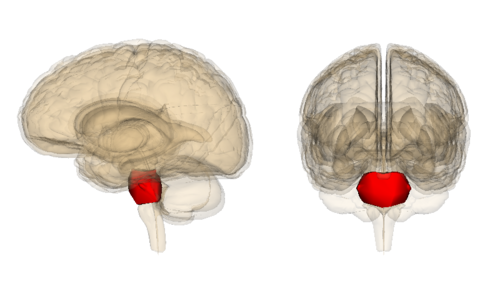Difference between revisions of "AY Honors/Brain and Behavior/Answer Key/es"
(Created page with " {{clear}}") |
|||
| (4 intermediate revisions by 2 users not shown) | |||
| Line 1: | Line 1: | ||
| − | + | {{HonorSubpage}} | |
| − | |||
| − | {{ | ||
| − | |||
| − | |||
| − | |||
| − | |||
| − | |||
| − | |||
| − | |||
| − | |||
| − | |||
<section begin="Body" /> | <section begin="Body" /> | ||
{{ansreq|page={{#titleparts:{{PAGENAME}}|2|1}}|num=1}} | {{ansreq|page={{#titleparts:{{PAGENAME}}|2|1}}|num=1}} | ||
| − | <noinclude> | + | <noinclude></noinclude> |
| − | </noinclude> | ||
<!-- 1. Ser capaz de etiquetar un diagrama o un modelo de un cerebro humano que incluya las siguientes partes: --> | <!-- 1. Ser capaz de etiquetar un diagrama o un modelo de un cerebro humano que incluya las siguientes partes: --> | ||
{|border=0 cellpadding=10 | {|border=0 cellpadding=10 | ||
| Line 30: | Line 18: | ||
|[[File:Telencephalon2.png|thumb|350px|center|h. El '''telencéfalo'''.]] | |[[File:Telencephalon2.png|thumb|350px|center|h. El '''telencéfalo'''.]] | ||
|} | |} | ||
| − | |||
<noinclude></noinclude> | <noinclude></noinclude> | ||
| Line 85: | Line 72: | ||
<noinclude></noinclude> | <noinclude></noinclude> | ||
<!-- 6. ¿Cómo son los sentidos del gusto y el olfato similares y cómo son diferentes? Dibujar un mapa de qué parte de la lengua corresponde a los siguientes sabores: dulce, agrio, amargo y salado. Instrucciones: Pedir a alguien que moje un hisopo en uno de los siguientes: agua de azúcar (para dulce), jugo de limón (para agrio), agua tónica (amarga) o agua salada (sal) y a continuación, tocar ligeramente diferentes partes de su lengua. Notar que las zonas de la lengua gustan la solución que se está poniendo a prueba. Enjuagar con agua pura entre cada prueba y el uso de un nuevo hisopo para cada prueba. --> | <!-- 6. ¿Cómo son los sentidos del gusto y el olfato similares y cómo son diferentes? Dibujar un mapa de qué parte de la lengua corresponde a los siguientes sabores: dulce, agrio, amargo y salado. Instrucciones: Pedir a alguien que moje un hisopo en uno de los siguientes: agua de azúcar (para dulce), jugo de limón (para agrio), agua tónica (amarga) o agua salada (sal) y a continuación, tocar ligeramente diferentes partes de su lengua. Notar que las zonas de la lengua gustan la solución que se está poniendo a prueba. Enjuagar con agua pura entre cada prueba y el uso de un nuevo hisopo para cada prueba. --> | ||
| + | |||
| + | <div lang="en" dir="ltr" class="mw-content-ltr"> | ||
| + | Draw a map of which part of the tongue responds to the following tastes: sweet, sour, bitter, salt. Instructions: Have someone dip a Q-tip into one of the following: sugar water (for sweet), lemon juice (for sour), flat tonic water (bitter) or salty water (salt), and then lightly touch different parts of your tongue. Notice which areas of the tongue taste the solution that is being tested. Rinse with pure water between each test and use a new Q-tip for each test. | ||
| + | </div> | ||
{{clear}} | {{clear}} | ||
| Line 253: | Line 244: | ||
==Referencias== | ==Referencias== | ||
| − | |||
<noinclude></noinclude> | <noinclude></noinclude> | ||
| − | + | {{CloseHonorPage}} | |
Latest revision as of 19:33, 25 July 2022
Nivel de destreza
2
Año
1999
Version
03.12.2025
Autoridad de aprobación
Asociación General
1
2
3
4
5
6
Draw a map of which part of the tongue responds to the following tastes: sweet, sour, bitter, salt. Instructions: Have someone dip a Q-tip into one of the following: sugar water (for sweet), lemon juice (for sour), flat tonic water (bitter) or salty water (salt), and then lightly touch different parts of your tongue. Notice which areas of the tongue taste the solution that is being tested. Rinse with pure water between each test and use a new Q-tip for each test.
7
8
Las tres partes básicas del oído son el oído externo, el oído medio y el oído interno.
9
9a
9b
9c
9d
9e
9f
10
11
11a
11b
11bi
11bii
11biii
11biv
11bv
11bvi
11bvii
11bviii
12
Un excelente lugar para encontrar referencias bíblicas sobre tomar decisiones es la Semana 23 de la guía devocional semanal de los Logros para la Investidura (requerido para los Compañeros y Viajeros):














